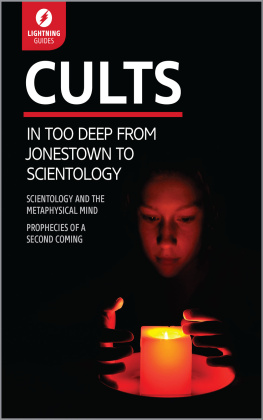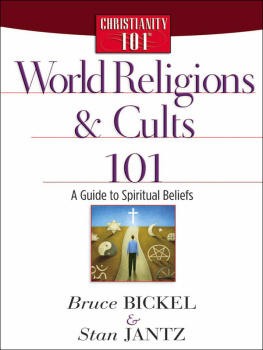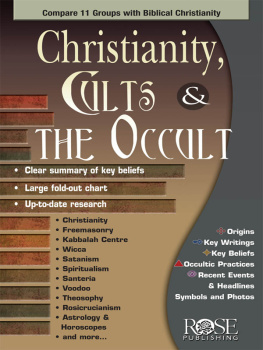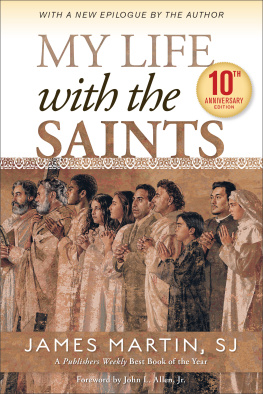SAINTS
AND THEIR MIRACLES
IN LATE ANTIQUE GAUL
SAINTS
AND THEIR MIRACLES
IN LATE ANTIQUE GAUL
Raymond Van Dam

Copyright 1993 by Princeton University Press
Published by Princeton University Press, 41 William Street, Princeton, New Jersey 08540
In the United Kingdom: Princeton University Press, Chichester, West Sussex
All Rights Reserved
Library of Congress Cataloging-in-Publication Data
Van Dam, Raymond
Saints and their miracles in late antique Gaul / Raymond Van Dam.
p. cm.
Includes English translations of selections from Fortunatus and Gregory of Tours.
Includes bibliographical references and index.
ISBN 0-691-03233-5 (alk. paper) ISBN 0-691-02112-0 (pbk.)
1. Christian saintsCultFranceHistory. 2. Christian pilgrims and pilgrimagesFranceToursHistory. I. Fortunatus, Venantius Honorius Clementianus, Bishop of Poitiers, ca. 530-ca. 609. Selections. English. 1993. II. Gregory, Saint, Bishop of Tours, 538-594. Selections. English. 1993. III. Title.
BX4659.F8V36 1993
235.2094409021dc20 92-40285 CIP
This book has been composed in Sabon Typeface
Princeton University Press books are printed on acid-free paper and meet the guidelines for permanence and durability of the Committee on Production Guidelines for Book Longevity of the Council on Library Resources
Printed in the United States of America
10 9 8 7 6 5 4 3 2 1
10 9 8 7 6 5 4 3 2 1
(Pbk.)
For My Father and Mother
CONTENTS
PREFACE
MARTIN OF TOURS required a historian to mold and publicize his subsequent prominence; Gregory of Tours needed a patron saint to bolster his ecclesiastical career and inspire his writings. In the solitude of their studies modern historians can perhaps imagine their relationship with their subject matter in a similar interactive fashion: they shape it, and it animates them. But the process of scholarly research and writing has become so complex and demanding that it moreover requires proper resources and reassuring criticism. At the University of Michigan the Rackham School of Graduate Studies awarded me a Faculty Fellowship for summer support, and the College of Literature, Science, and the Arts subsidized some of the production expenses with a grant from the Faculty Assistance Fund. Joanna Hitchcock, Lauren Osborne, and Lauren Lepow have been wonderful editors at the Press; Sabrina Meyers drew the map. I am also grateful to Mel, Andy, and John Heath for an invitation to speak about illness and healing, and to Jody Maxmin. As Gregory discovered upon becoming a writer, to interpret the lives of others demands contemplation of ones own life, and to record the assistance of patron saints is also to recall the love of friends and parents.
ABBREVIATIONS
ACW | Ancient Christian Writers (Westminster). |
Bud | Collection des Universits de France publie sous le patronage de lAssociation Guillaume Bud (Paris). |
CChr.lat. | Corpus Christianorum, series latina (Turnhout). |
ChLA | Chartae Latinae Antiquiores: Facsimile Edition of the Latin Charters Prior to the Ninth Century, ed. A. Bruckner and R. Marichal. Vol. 13, France I, ed. H. Atsma and J. Vezin (Zurich, 1981). |
CSEL | Corpus Scriptorum Ecclesiasticorum Latinorum (Vienna). |
FC | Fathers of the Church (Washington, D.C.). |
LCL | Loeb Classical Library (Cambridge, Mass., and London). |
MGH | Monumenta Germaniae Historica (Berlin, Hannover, and Leipzig). |
AA | Auctores antiquissimi |
Epp. | Epistolae |
SRM | Scriptores rerum Merovingicarum |
NPNF | A Select Library of Nicene and Post-Nicene Fathers of the Christian Church, 2d series (reprinted Grand Rapids). |
PL | Patrologia latina (Paris); and Supplementa, ed. A. Hamman (Paris, 19581974). |
PLRE | The Prosopography of the Later Roman Empire. Vol. 1, ed. A.H.M. Jones, J. R. Martindale, and J. Morris (Cambridge, 1971). Vol. 2, ed. J. R. Martindale (Cambridge, 1980). |
RICG | Recueil des inscriptions chrtiennes de la Gaule antrieures la Renaissance carolingienne (Paris). |
SChr. | Sources chrtiennes (Paris). |
TTH | Translated Texts for Historians (Liverpool). |
De cursu, GC, GM, Hist., MA, VJ, VM, VP: references to the writings of Gregory of Tours omit his name; for details, see the list of editions and translations. |
SAINTS
AND THEIR MIRACLES
IN LATE ANTIQUE GAUL
INTRODUCTION
THE FIFTH CENTURY marked an important period of transition for late antique Gaul. During the later fourth century the Roman frontier along the Rhine and upper Danube rivers had still protected Gaul successfully enough that even rumors of barbarian incursions never disturbed Bishop Martin of Tours until he visited the imperial court at Trier.
The Christianity that developed stressed certain distinctive features, however. Bishops considerably enhanced their influence, in part because cities, their sees, now assumed vital administrative functions, in part too because local aristocrats began to view clerical offices as a means of maintaining or enhancing their traditional local standing. Another characteristic feature was the increasing prominence of relics and saints cults. Sulpicius Severus set the tone for much subsequent hagiography by composing a Vita of Martin of Tours already before the bishops death in 397; during the fifth century various bishops of Tours contributed both to the saints cult and to the enhancement of their own see by constructing many churches and shrines; and as the Merovingian dynasty of the Franks consolidated its control over Gaul, its kings granted privileges to the church of St. Martin at Tours. The development of the cult of St. Martin at Tours thus provides a general paradigm of the development of saints cults throughout late antique Gaul: more hagiography, more churches and shrines, and a wider impact.
The study of late Roman and early medieval saints cults has expanded considerably during the past two decades, and the leading impresario of this revived interest has been Professor Peter Brown, whose articles on holy men and book The Cult of the Saints have been deservedly and widely influential. A brief summary can only hint at the many important insights in his book about saints cults in the Latin Christian world. After criticizing the common tendency to attribute the emergence of beliefs in the efficacy of relics to the influence of the vulgar superstitions of ordinary people, Brown emphasized instead the decisive role of elites in propagating these beliefs. Intimacy with a patron saint hence became one powerfully effective means of coping with conversion and its consequent reorientation of social identity, or with deep anxieties about sin and guilt. The second was the connection between cults and communities, as a result of which the beliefs surrounding saints and relics could mitigate divisions by promoting an ideal concord and could reaffirm the exercise of beneficial authority by retelling the saints victories over unjust powers. The ceremony of exorcism provided Brown with an extended example of a public ritual that involved confessions, judgments, and reintegration.
Next page







